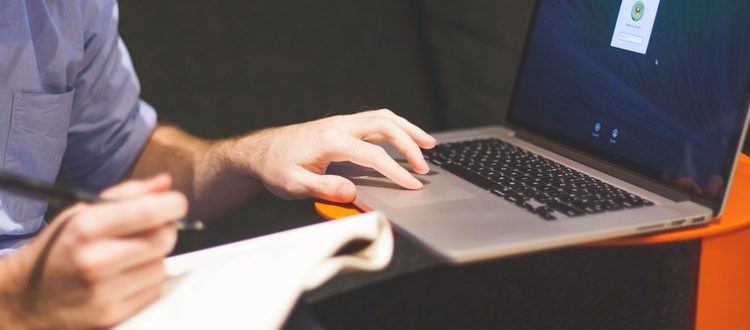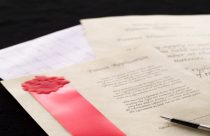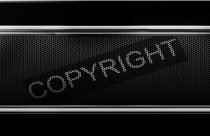Researcher’s Guide to Patents

With the ongoing CRISPR patent battle, there is no better time to refresh some important information on patenting inventions. Legally, technology transfer is defined as formal licensing of technical inventions to third parties under the guidance of professional organization. Accordingly, for new technological inventions, a government body usually grants legal rights (monopoly) in the form of a patent. A patent awards rights to the inventor/entity, preventing others from claiming ownership, yet allowing the use of the technology. The process for applying and acquiring a patent is however complex and diverse. Primarily, the United States Patent and Trademark Office has a clear patent application process for outstanding research inventions. On the same note, the European Community Research and Development framework has similar guidelines.
What is a Patent?
By definition, a patent is protection granted to an invention by a national government. This protection provides leverage to the patent holder. It excludes others from creating, using, or selling an invention for a period stated in the patent document. A patent lasts for over 20 years.
What is Patentable?
Three types of patent grants include; utility, design, and plant, with most new inventions registered as utility patents. In the United States patent law, a patentable idea must be useful beyond a theory, known as “reduction to practice.” At present, the types of patentable utility inventions include,
- A process (an operation/method producing a result)
- A machine (a mechanically, electronically or electrically operated device)
- Articles of manufacture
- Research papers that are sensitive and include innovative or critical information
- A composition of matter (chemical/metallurgical, including elemental combinations or new compounds)
- Improvements to any of the above
The development must be novel to the world, have a useful purpose with “real-world” value and be non-obviously original. With computer-related inventions, for example, patent examiners first determine the software’s patent suitability based on the functionality. Based on the contribution, the role of the inventor is legally determined. In addition, when assigning inventorship, the contribution made by co-authors to publish work related to the invention is subjective. Additionally, publicly available information known as ‘prior art’ needs to be considered. Filing a Patent Application
Several patenting organizations publish patent applications, allowing an inventor to apply for a patent in more than one country. The formal document submitted to the patent office for examination is a ‘patent application’ that describes an invention for reproducibility. Formal application requirements include the background and a brief description of the invention, including drawings (if any) and claims. The claims define the scope of its protection and reuse. Once complete, the case is assigned to an appropriate examiner in the relevant area of technical expertise.
What are the Different Types of Patents?
4 different types of patent applications exist based on the type of invention and the kind of security it needs. Inventors can acquire patents to secure their rights on the invention and protect it from being mishandled.
1. Utility Patent
A utility patent is a long, technical document that provides an information on the usage of new machine, process, or system. While the government decides which inventions can be patented under this category, new technologies like genetic engineering and internet-delivered software are challenging the boundaries to receive utility patent protection.
2. Provisional Patent
The provisional patent allows inventors to file a less formal document. This states that the inventor was in possession of the invention and had adequately figured out how to utilize the invention. However, this is regarded as a pending patent. If the inventor fails to file a formal utility patent within a year after filing the provisional patent, it will result in losing of filing date.
3. Design Patent
The design patent offers protection for an accessorizing design. For example, the structure of a machine or the design of an instrument can be protected by a design patent. The design patent document mostly comprises pictures, drawings, or sketches of the design of the item in question. Software companies use design patents to protect elements of user interfaces and even the shape of touchscreen devices.
4. Plant Patent
As the name suggests, a plant patent protects new kinds of plants produced by cuttings or other asexual means as in horticulture. This does not generally include genetically modified plants.
How Do You Get a Research Patent?
The patent office provides filing of provisional patent applications, protecting an invention in the short-term with a fixed priority date. Within this time, the utility patent application should be submitted claiming priority to the provisional. While a provisional application protects the invention, the utility application consists of disclosure and necessary information.
What are the Five Requirements for Obtaining a Patent?
The five requirements for obtaining a patent are as follows:
1. Patentable Subject Matter
Novel products such as appliances, tools, medical devices, pharmaceutical drugs, software, etc. are eligible for obtaining a patent. Furthermore, a new manufacturing process or method, business methods, or biological materials are eligible for patent application.
2. Novelty of Innovation
A patent can only be assigned to a novel innovation. The novelty of the innovation is assessed based on the date you file your application for the patent. Therefore, it is critical that you have signed a confidentiality agreement.
3. Innovation is Inventive
This requirement for obtaining a patent relates to the “obviousness” of the invention. The invention cannot be patented if it is “obvious” to a skilled person.
4. Utility of Innovation
This requirement relates to whether the invention is capable of being reproduced in accordance with the claims and information in the patent made by the inventor.
5. Innovation’s Prior Existence
The invention will be disqualified from obtaining a patent if it has been used or applied previously.
Patent Prosecution
The prosecution process occurs internally as a discussion between the patent attorneys and the patent examiner. Upon filing the utility application, the patent examiner will inspect and respond with an official action, called “office action.” After the examiner decides to issue the patent, notice of allowance is sent to the applicant to pay an issue fee and submit the required drawings within three months of its receipt. A smooth ‘office action’ process is rare. There might be objection/rejection of certain claims and/or a restriction requirement. For instance, if a single application appears to detail two or more inventions, a restriction requirement may apply. After receipt of the fee and drawings, application file is transferred to the publication unit in the patent office. Upon publication, the original patent grant document is sent to the institution’s patent attorney. Thereafter, the government patent office will post the patent document on their official website too
How Long Does It Take to Receive a Patent?
It is important to note that filing a utility patent application does not guarantee the issuance of a patent. The time between application and issuance can be two or more years. The duration depends on many factors including the type of technology, patent examiners and the response time to examiner’s actions. Most universities or institutions have a comprehensive outline to facilitate the process of technology transfer, including fees and guide to commercialization. Inventors are encouraged to contact administrative staff at the earliest to streamline the process.
How Not to Lose Patent Protection
The patenting process can be long and costly. Rights may be lost if the researcher discloses the invention in a publication. Researchers can, therefore, hold publications during the three-month examination period that ensures the invention’s patentability and commercial potential. Usually, the decision for patent filing should take shorter time if publication is imminent.
To recap, first file an invention disclosure, provide complete invention description, and information on the co-inventors, source of funding and third-party affiliations. Ensure to respond to the examiner in timely and clear manner. Follow best practices to protect intellectual property and ensure adherence to guidelines to prevent conflicts of interest.









